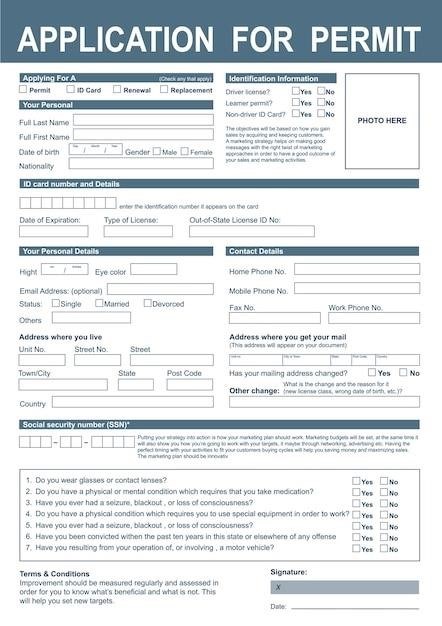What is a McKenzie Friend?
A McKenzie Friend is an individual who can attend court with a litigant in person, a person involved in court proceedings who is representing themselves. They can offer moral support and practical assistance, such as taking notes, reminding the litigant of points to raise, and helping them to understand the court process.
Definition of a McKenzie Friend
A McKenzie Friend is a person who provides support to a litigant in person, someone representing themselves in court, without being a lawyer or legal representative. They can offer practical assistance, such as taking notes, reminding the litigant of points to raise, and helping them to understand the court process. However, they cannot provide legal advice or represent the litigant in court.
Role of a McKenzie Friend in Court
A McKenzie Friend can play a crucial role in supporting a litigant in person during court proceedings. They can help the litigant to understand the court process, prepare for hearings, and present their case effectively. They can also act as a buffer between the litigant and the court, ensuring that the litigant feels comfortable and confident in the courtroom. While they cannot provide legal advice, they can assist with practical tasks such as organizing documents and taking notes.
Limitations of a McKenzie Friend
It is important to remember that McKenzie Friends are not lawyers and cannot provide legal advice. They are not permitted to represent a litigant in court or to make legal arguments on their behalf. They also cannot act as a witness in the case. Furthermore, the court may impose restrictions on the role of a McKenzie Friend, and they may be asked to leave the courtroom if they are deemed to be disruptive or interfering with the proceedings.
Applying for a McKenzie Friend in the UK
In the UK, you can apply for a McKenzie Friend to assist you in court proceedings.
Types of Court Proceedings Where McKenzie Friends are Used
McKenzie Friends are commonly used in family court proceedings, such as child arrangements orders, prohibited steps orders, and specific issue orders. They can also be used in civil court proceedings, including divorce, financial provision, and inheritance disputes. In criminal court proceedings, McKenzie Friends can provide support to defendants in cases such as assault, theft, and drug offenses.
The C100 Application Form
The C100 Application Form is the primary document used to apply for a court order in family proceedings in the UK. It is used to make arrangements for a child or to resolve a dispute about their upbringing. The form requires basic information about the applicant, the child, and the other parent or parties involved, and it outlines the desired outcome of the application.
Form C8⁚ Confidential Contact Details
Form C8 is a separate document used in conjunction with the C100 Application Form to protect confidential contact details; This form allows individuals to withhold sensitive information from court documents, ensuring their privacy and safety. It is essential to complete this form if you wish to keep certain details confidential, such as your address or contact information.
Form FM1⁚ Parental Responsibility Order
Form FM1 is specifically designed for applications related to parental responsibility orders under the Children Act 1989. If your application seeks a parental responsibility order, this form must be completed and submitted alongside the C100 application. This form gathers specific details about the child, the parties involved, and the desired arrangements for parental responsibility.
Form A1⁚ Financial Provision
Form A1 is specifically designed for financial provision applications under the Domestic Proceedings and Magistrates Courts Act 1978 or Schedule 6 to the Civil Partnership Act 2004. If your application seeks financial provision, you must complete and submit Form A1 alongside your main application. This form gathers details about your financial situation, the other party’s financial situation, and the desired financial arrangements.
Finding a McKenzie Friend in the UK
There are various resources available to help you find a McKenzie Friend in the UK, ranging from online networks to dedicated charities.
McKenzie Friend UK Network
The McKenzie Friend UK Network is a valuable resource for those seeking assistance in family court proceedings. This organization offers a directory of experienced and qualified McKenzie Friends across the UK. Their website allows you to search for a McKenzie Friend based on your location and specific needs. The network provides affordable support for various family law matters, including child arrangements, finances, non-molestation orders, and more. If you’re looking for a McKenzie Friend to guide you through the process, this network is a great place to start.
HelpMcKenzie-Friend.Org.UK
HelpMcKenzie-Friend.Org.UK is a dedicated website providing information and support for McKenzie Friends in the UK. This platform offers guidance on the role of a McKenzie Friend, their responsibilities, and the legal framework surrounding their involvement in court proceedings. You can find resources such as the Code of Conduct for McKenzie Friends and information on the Notice of McKenzie Friend document. The website aims to ensure that McKenzie Friends have the necessary knowledge and understanding to effectively assist those representing themselves in court.
Mens Aid Charity
Mens Aid Charity is a valuable resource for men facing family law issues in the UK. While they don’t directly provide McKenzie Friend services, they offer a range of support, including legal advice, mediation, and advocacy. This can be particularly beneficial for men navigating complex family court matters, as they can receive guidance on navigating the legal system and understanding their rights. Mens Aid can also connect men with other relevant support organizations that may offer McKenzie Friend services if needed.
Rights of Women
Rights of Women is a UK-based charity dedicated to supporting women facing legal challenges, particularly those related to violence against women and girls. While their primary focus is providing legal advice and information, they don’t directly offer McKenzie Friend services. However, their website contains resources that can be valuable to individuals seeking to understand the role of a McKenzie Friend in court proceedings. Additionally, they may be able to connect women with other organizations that provide McKenzie Friend support, ensuring access to the right resources during legal proceedings.
Leeds Law Society
The Leeds Law Society is a professional organization that represents solicitors and other legal professionals in the Leeds area. While they don’t directly provide McKenzie Friend services, their website contains a wealth of information for individuals navigating the legal system. This includes guidance on court procedures, forms, and legal rights. Individuals seeking information on McKenzie Friends and their role in court proceedings can find relevant resources and potentially connect with other organizations providing McKenzie Friend support through the Leeds Law Society’s website.

Legal Guidance on McKenzie Friends
There are several resources available to provide guidance on using McKenzie Friends in the UK.
Practice Note (Family Courts⁚ McKenzie Friends)
This Practice Note provides guidance on the role of McKenzie Friends in family court proceedings. It sets out the principles that should be followed by courts and litigants in relation to McKenzie Friends. The Practice Note was originally issued in 2008 but has since been withdrawn and replaced with updated guidance in light of the increase in litigants-in-person in family courts.
Code of Conduct for McKenzie Friends
The Code of Conduct for McKenzie Friends outlines the ethical standards and responsibilities expected of individuals acting as McKenzie Friends. It covers aspects such as confidentiality, impartiality, and the avoidance of conflicts of interest. The Code is intended to ensure that McKenzie Friends act professionally and responsibly while providing support to litigants in person.
Notice of McKenzie Friend
The Notice of McKenzie Friend is a form that needs to be completed and submitted to the court by the litigant in person who wishes to be assisted by a McKenzie Friend. This form provides details about the McKenzie Friend, including their name, contact information, and the nature of their relationship with the litigant. The court will then review the form and decide whether to permit the McKenzie Friend to assist in the proceedings.

Resources for McKenzie Friends
There are various resources available to McKenzie Friends, including training modules, free services, and online form builders.
McKenzie Friend Training Modules
McKenzie Friend Training Modules provide valuable resources for individuals who wish to support litigants in person. These modules cover a wide range of topics, including the role of a McKenzie Friend, court procedures, legal terminology, and ethical considerations. They equip individuals with the knowledge and skills necessary to effectively assist litigants in navigating the complexities of the legal system. The McKenzie Friend UK Network offers training modules to equip individuals with the necessary skills and knowledge to effectively support litigants in person.
Free McKenzie Friend Services
Several organizations across the UK offer free McKenzie Friend services to individuals who cannot afford legal representation. These services are often provided by charities, law centres, and law schools. They aim to ensure that everyone has access to justice, regardless of their financial circumstances. The Personal Support Unit, for instance, provides free McKenzie Friend services to individuals facing family court proceedings. These services can be invaluable for those navigating the complexities of the legal system without the financial means to hire a lawyer.
Online Form Builders
Online form builders like Jotform and Wufoo offer user-friendly platforms to create custom application forms. These platforms allow individuals to design forms for a range of purposes, including applications for McKenzie Friend services. The form builder tools provide templates, customizable fields, and a user-friendly interface, enabling individuals to create professional-looking forms that streamline the application process for both applicants and those managing the applications. This accessibility empowers individuals to efficiently manage their applications for McKenzie Friend services.
Application Form Samples
Accessing application form samples can be invaluable for understanding the structure and content typically required for McKenzie Friend applications. These samples provide insights into the essential information sought by organizations and courts, including personal details, legal background, experience, and availability. Reviewing these samples can help individuals prepare their applications effectively and ensure they meet the necessary criteria for becoming a McKenzie Friend. This resource serves as a valuable guide for individuals seeking to contribute their skills and support to litigants in person navigating the legal system.
Key Considerations When Using a McKenzie Friend
It is crucial to understand the scope of a McKenzie Friend’s role and the limitations of their assistance to ensure that expectations are realistic and that clients are not misled about the level of legal advice they can provide.
Protection for Clients
If you pay for the services of a McKenzie Friend, you should be treated fairly and get a good level of service under the Consumer Rights Act 2015. However, if you use legal services provided by a McKenzie Friend, and things go wrong, you will not have the same protections that you would if you had used a regulated firm. It is therefore essential to carefully research and select a McKenzie Friend, ensuring they have the necessary experience and qualifications to provide effective support.
Regulation of McKenzie Friends
McKenzie Friends are not subject to the same level of regulation as lawyers. They are not required to be qualified or licensed, and they are not bound by the same professional rules of conduct. This lack of regulation can raise concerns about the quality of service provided by McKenzie Friends. However, there are some efforts to promote good practice, such as the Code of Conduct for McKenzie Friends issued by the Master of the Rolls and the President of the Family Division.
Legal Advice vs. McKenzie Friend Support
It’s crucial to understand the distinction between legal advice and McKenzie Friend support. A McKenzie Friend cannot give legal advice or represent a litigant in court. They can only offer practical assistance and moral support. If you require legal advice, you must consult a qualified solicitor. A McKenzie Friend can be a valuable asset for litigants in person, but they should not be seen as a substitute for legal representation.










